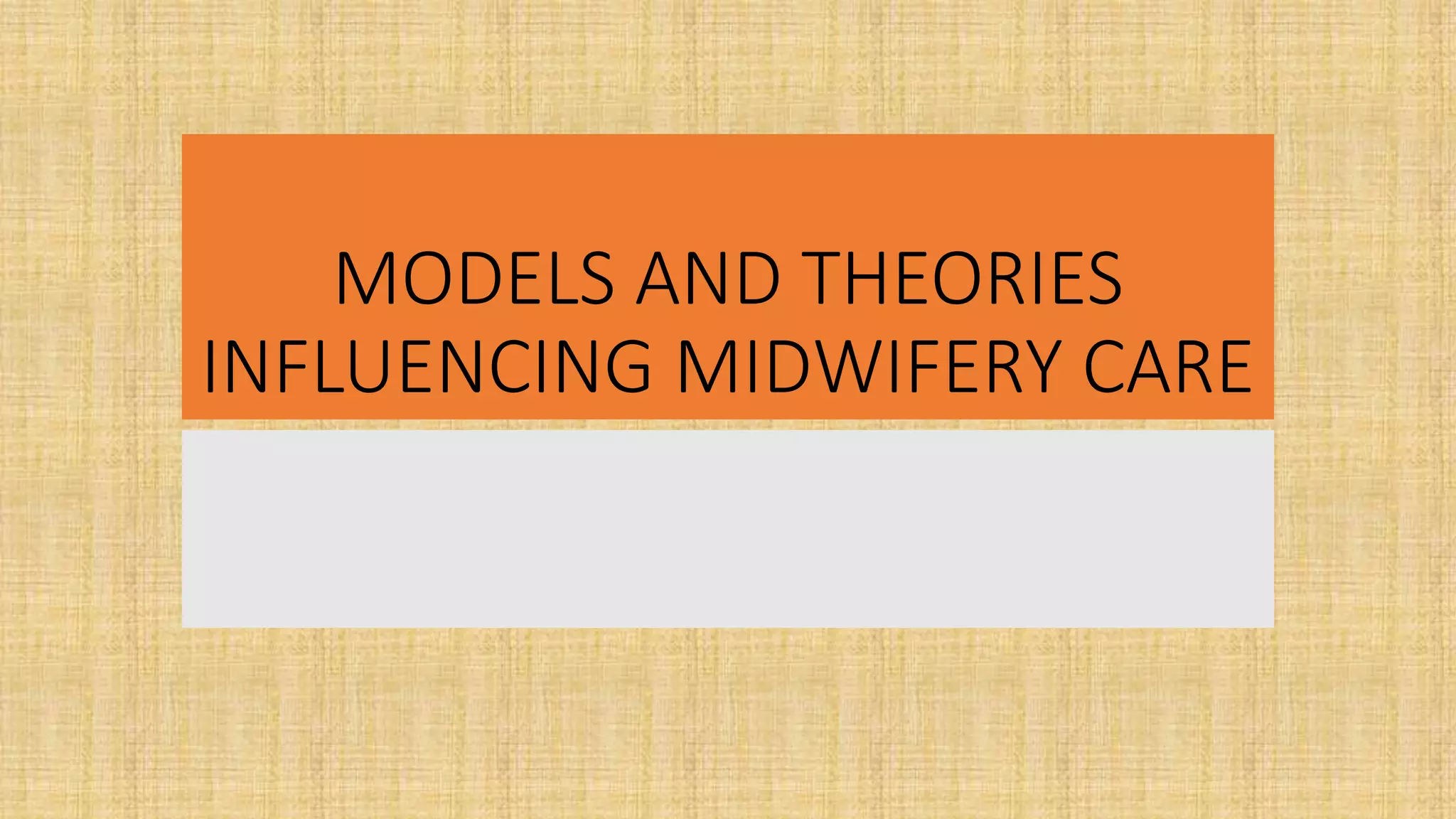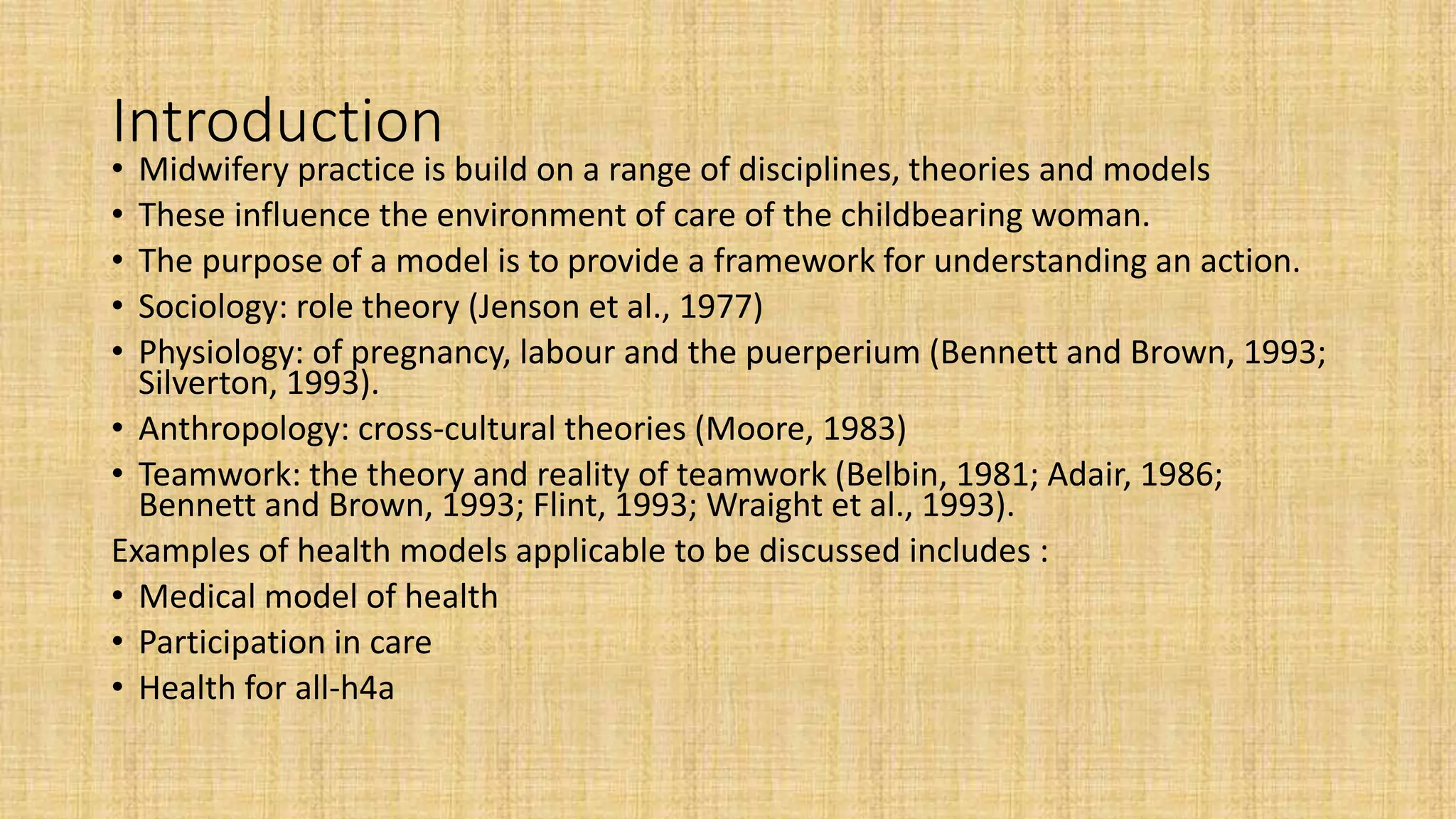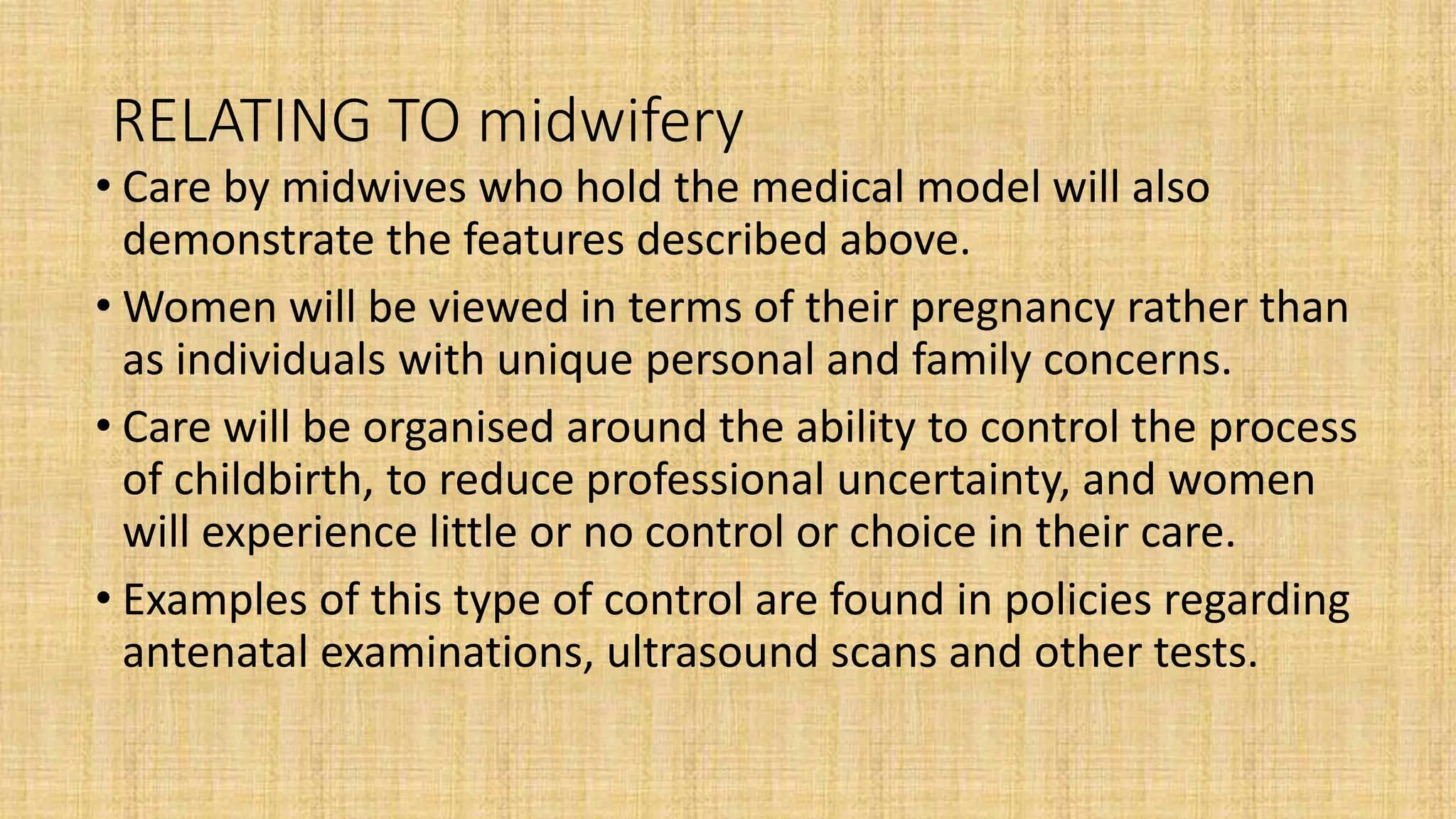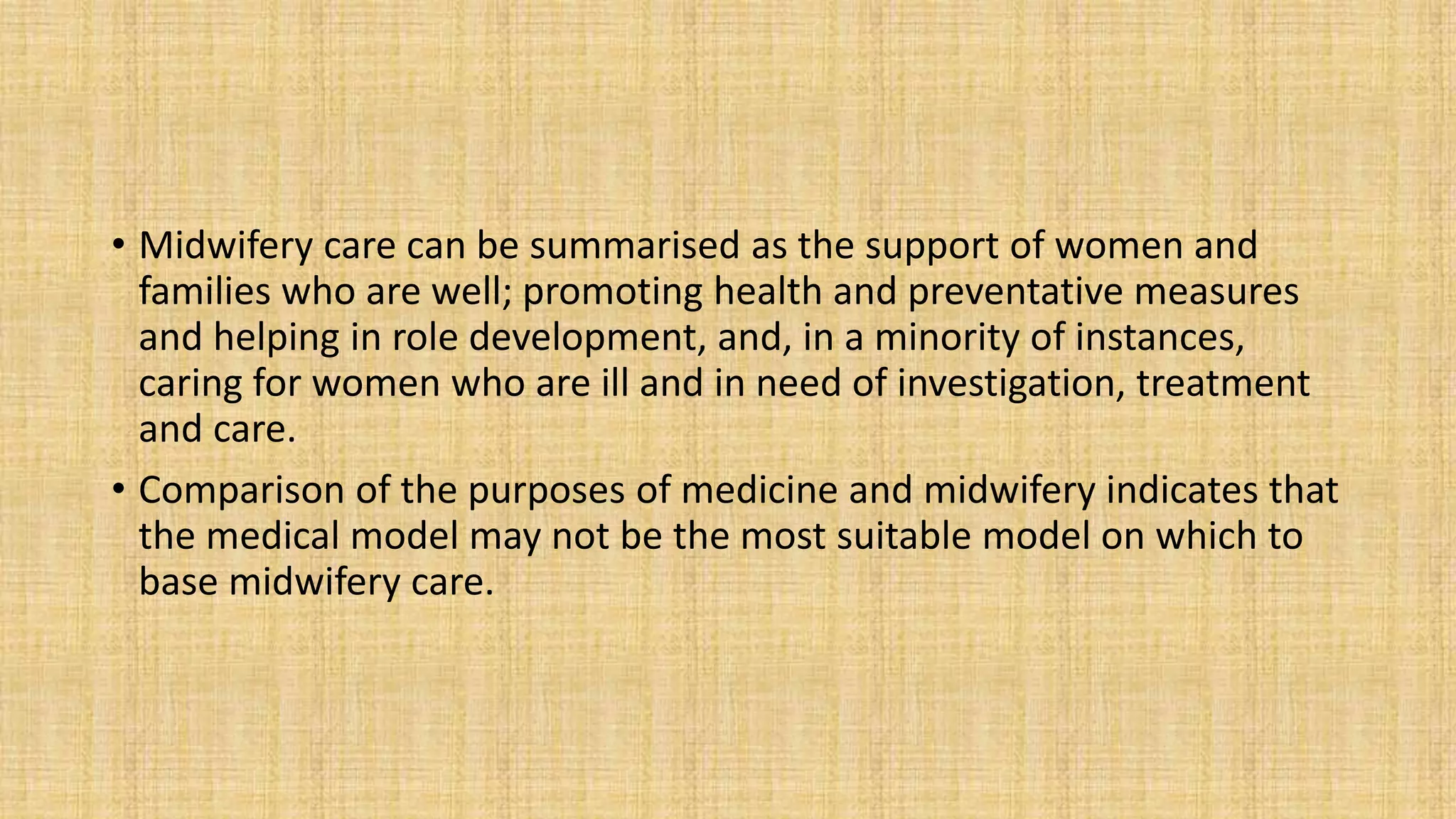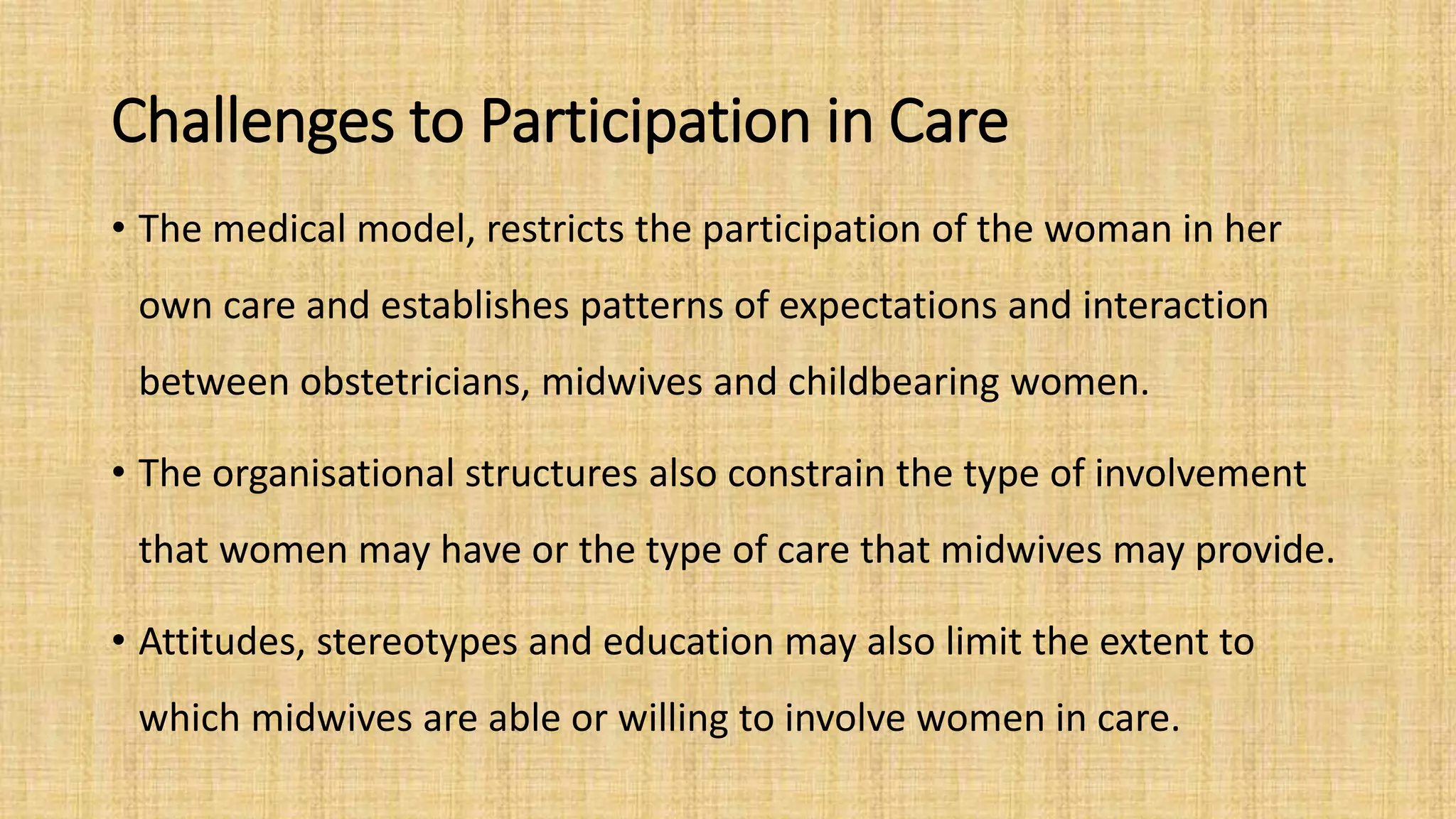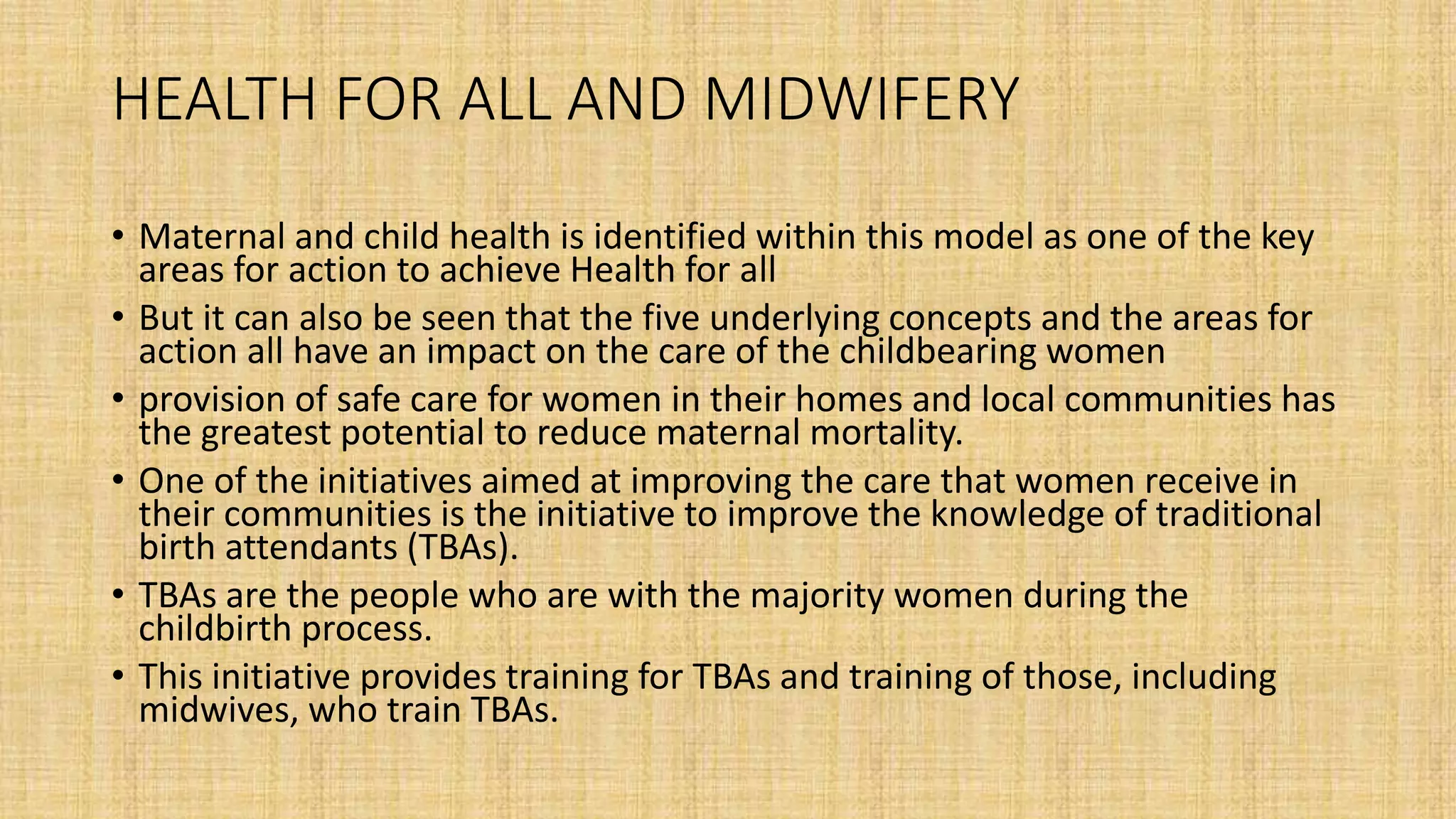The document discusses models and theories that influence midwifery care. It begins by identifying disciplines like sociology, physiology, and anthropology that form midwifery's foundation. It then examines the medical model in depth, noting its focus on disease treatment and practitioner control. While useful for addressing illness, the medical model is criticized for neglecting holism and empowerment. The document also discusses models of participation in care, emphasizing patient-centeredness, shared decision-making, and community involvement at various levels from receiving services to planning programs.
